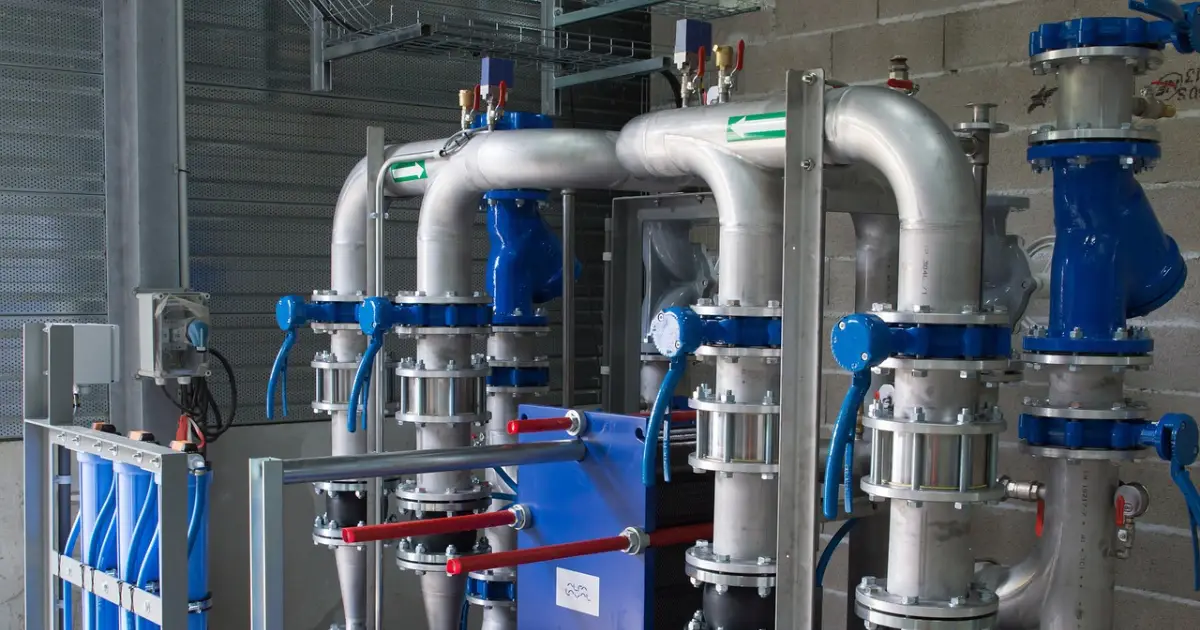focus notes


Introducing IoT to the factory! Explaining benefits such as data visualization and system usage examples

table of contents
Can IoT be introduced into factories?
"What exactly are IoT and smart factories?"
Some people may have questions like this. First of all, IoT technology can also be introduced in factories. You can expect to improve productivity, reduce labor costs, and create new business.Smart factories (factories that incorporate cutting-edge technologies such as IoT) use AI and robots to carry out their work, so they tend to be less affected by human resource shortages. IoT can now be said to be an indispensable technology for factory operations.
Therefore, in this article, we will explain the overview of smart factories and IoT, the benefits of introducing IoT, the introduction procedure, and examples. By reading this article, you will understand the necessity and importance of IoT, and you will be able to smoothly implement IoT. If you are worried about ``I want to know the benefits of smart factories or don't know the steps to introduce IoT,'' please refer to this article.
IoT can also be introduced to factories! Explaining smart factories
It is possible to introduce IoT into factories as well. Here we will explain what a smart factory is.
- Factories are also IoT-enabled! What is a smart factory?
- First of all, what is IoT?
Factories are also IoT-enabled! What is a smart factory?
A smart factory is an advanced factory that utilizes AI and IoT technology to perform production, design, manufacturing, maintenance, etc.Smart factories, also known as smart factories, were created in accordance with the concept of Industry 4.0 (Fourth Industrial Revolution), which was proposed by the German government in 2011.
Operations in smart factories tend to require less human labor than in traditional factories. This is because by using technologies such as IoT, it is possible to streamline and automate operations. Therefore, the following effects can be expected.
- Improving productivity and operational efficiency
- Reduce labor costs
- Reduced working time
- Eliminating labor shortages
- Creation of new business
- Improved safety
By introducing IoT technology and turning it into a smart factory, you will be able to solve problems and create new business. Smart factories have many possibilities.
First of all, what is IoT?
IoT is an abbreviation for "Internet of Things" and is a technology that connects various things to the Internet.In Japan, it is translated as the Internet of Things.
IoT is made up of the following five components.
element | Features |
Device (mono sensor) | collect data |
network | sent over the network |
gateway | Doorway connecting things and networks |
Server Cloud | Accumulate, analyze, and process data |
application | control the system |
IoT, which consists of the five elements mentioned above, allows various things to connect to the Internet. Currently, the types of devices, modules, and applications are increasing, and the following are being created.
- smart home appliances
- Wearable Devices
- smart lock
- smart home
- car sharing
- smart highway
- smart meter
For example, there is a smart home appliance called a smart refrigerator. A smart refrigerator is an IoT device that can manage the ingredients in the refrigerator, track expiration dates, suggest recipes, create shopping lists, and more. Some refrigerators can also play music and manage family schedules through the touch screen. Not only will they provide convenience in daily life, but they will also contribute to improving energy efficiency and quality of life.
This shows that IoT technology is widely used not only in factories but also in the lives of ordinary people.
For more information on IoT, please refer to the following article.
IoT stands for Internet of Things! Explaining how it works, what it can achieve, and examples of its implementation
Visualize your data! Advantages of introducing IoT to factories
Here we will explain three benefits of introducing IoT into factories.
- Optimize staffing
- Get information in real time
- Energy consumption during manufacturing can be visualized
Optimize staffing
One of the benefits of introducing IoT into factories is the ability to optimize personnel allocation.This is because we can accurately convert operating status, operating hours, etc.
In factories where IoT has not been introduced, it is difficult for managers to fully grasp the movements of each individual worker. When digitizing the work efficiency of workers, the manager must visually and manually enter the data, which takes a huge amount of time. Even if the data is collected, it may not be accurate.
However, by introducing IoT, the above issues can be solved. By attaching special sensors to workers' name tags, hats, etc., it is possible to easily quantify the movement line, travel distance, and working time during work. The data is accurate and will be of great help.
Get information in real time
By introducing IoT devices and using sensors that utilize IoT technology, it is possible to obtain a variety of information in real time, such as the following information:
- Work man-hours and time
- Worker flow lines and work efficiency
- Overall work progress
- energy consumption
- Number of defective products
- Equipment abnormality
- Number and content of complaints
By introducing IoT, it will be possible to identify malfunctions and accidents in advance, allowing prompt replacement and alerting. As a result, the probability of unexpected accidents occurring is greatly reduced. By being able to predict the maintenance period for factory equipment, it may be possible to reduce unnecessary parts replacement and work man-hours.
It also has the potential to reduce opportunity losses such as stopping production lines. In conventional factories, equipment could suddenly break down without knowing the signs of trouble, or the production line could stop due to shortages due to lack of management. However, using IoT technology can provide a solution to such problems.
Since you can immediately check the work progress at the factory and the production progress on the manufacturing line, you can also visualize the causes of progress delays. You can also estimate work progress by using sensors that monitor the physical environment such as temperature, humidity, and vibration. Track work environment conditions and equipment performance so you can make accurate estimates.
Energy consumption during manufacturing can be visualized
One of the benefits is that it makes it possible to visualize the amount of energy consumed during manufacturing.Based on the data you collect, you can adjust your manufacturing process and reduce wasteful energy consumption.
For example, 24-hour management is possible simply by attaching a dedicated sensor to the device. Some systems have the ability to automatically turn off the machine when not needed. You can cut unnecessary costs and improve profit margins. Since you can always know how much energy is consumed in which work process and how much the consumed energy costs, you will be able to review and optimize your work processes.
It is also possible to improve product quality by investing the saved budget in other processes, operations, and equipment. It may also be possible to improve and customize it. Visualizing energy consumption through the introduction of IoT is useful in a variety of ways.
Flow of introducing an IoT system into a factory
Here, we will explain the flow of introducing an IoT system into a factory, divided into six steps.
- Clarify your purpose
- Decide what data to acquire
- Temporarily build the system
- Build this system
- Acquire and analyze data
- Reflect analysis results on equipment and equipment
Clarify your purpose
First, let's clarify the purpose of introduction.By clarifying the purpose of implementation, you can focus limited resources such as money, time, and personnel on important items. It will also be easier to understand the IoT technology required for your goals.
When defining your purpose, make sure you clarify the following:
- What kind of problems do you want to solve by introducing IoT?
- What results do you expect from the introduction of IoT?
- What kind of business model do you want to realize by introducing IoT?
- What kind of competitive advantage do you want to gain by introducing IoT?
- What kind of social contribution do you want to achieve by introducing IoT?
If you can't figure it out on your own, it's a good idea to consult with management or the site manager.
Decide what data to acquire
Once the purpose of introducing IoT is clear, decide on the data to be acquired.To achieve our objectives, we require certain relevant data. By directly linking the acquired data to business objectives and specific problem solutions, more effective analysis and measures are possible.
To begin with, there are many types of data, as shown below.
Type of data | Concrete example |
Facility Data | Operating status, temperature, humidity, vibration, power consumption, etc. |
Product data | Manufacturing date and time, lot number, inspection results, shipping history, etc. |
environmental data | Temperature, humidity, atmospheric pressure, wind speed, noise, etc. |
work data | Work time, work content, worker movements, etc. |
customer data | Customer attributes, purchase history, behavioral data, etc. |
If you understand the purpose of implementing IoT, you will know which data to focus on collecting. However, depending on your factory, there may be hundreds of data items. If you are unsure, please consult with the business operator or other person concerned. You'll know your priorities.
Temporarily build the system
Once you have decided on the data to be acquired, temporarily construct the IoT system.If you introduce this system without first constructing the system temporarily, the risk of failure will increase, so please be careful.
When introducing a provisionally constructed system, please hold detailed discussions with the business operator, factory manager, and workers. In particular, you should confirm the following:
- Is the data you want to measure measured correctly?
- Is there anything that is difficult to use?
- Is it possible to standardize the work so that everyone can use it?
- Are there likely to be changes depending on region/factory?
- Are there any unclear points or questions?
Let's all confirm the above and build a tentative system while aligning our understanding.
Build this system
If there are no problems after using the temporarily constructed system, please construct the main system.After completing the construction of this system, be sure to check the following.
- Have the issues when using the temporary construction system been resolved?
- Is the data you want to measure measured correctly?
- Is there any new data you would like to measure?
- Can workers use it without any problems?
Building this system is not the end. This is because new systems must be constructed and maintained. In particular, be sure to check whether the data is being measured as intended. If you are having trouble collecting data, check the following:
- Are IoT devices working properly?
- Are workers being properly managed and dealt with?
- Is the system updated?
If there are no problems with the above, it may be necessary to change the installation location or equipment. Let's make adjustments repeatedly while consulting with the business operator. Please check whether the constructed system is being utilized correctly according to the literacy and technical ability of the workers.
Acquire and analyze data
Once your IoT service deployment is complete, it's time to collect and analyze your data.Collecting and accumulating data will lead to improved productivity and solving future issues.
However, to ensure the accuracy of the collected data, it is necessary to perform appropriate preprocessing such as noise removal. This is because the quality of the data greatly influences the accuracy of the analysis.
If you want to remove noise, we recommend a method called moving average*.
*A method of smoothing data by calculating the average value of a certain number of consecutive data points in a data set. Simply put, it is a method for smoothing time series data.
It helps reduce short-term random fluctuations and reveal long-term trends.
Implementing such methods can improve the quality of your data and increase the reliability of your analysis results. Customize it for your specific dataset and analysis goals.
Reflect analysis results on equipment and equipment
Once the analysis of the acquired data is complete, reflect the analysis results on equipment and equipment.IoT technology requires daily verification and improvement even after its introduction. With the introduction of IoT, it is necessary to solve new issues and areas for improvement. Please keep the following points in mind as you repeatedly verify and improve.
- Are there any unresolved issues?
- Is it likely that the goal will be achieved based on the current progress and collected data?
- Has the literacy and skills of workers improved?
It is important to check each time whether the data necessary to achieve the purpose has been collected correctly. Additionally, the amount of data that can be collected may increase as workers improve their literacy and management skills. If workers are unable to adapt, try to improve their literacy and skills through training, holding study sessions, and reviewing their daily work. Please periodically verify and improve according to the situation.
Explaining the issues involved in making a smart factory
There are two issues when introducing IoT and turning a factory into a smart factory.
- Security measures
- Securing human resources
Security measures
When creating a smart factory, it is necessary to take thorough security measures.Because IoT is a technology that uses the Internet, there are always risks such as cyber attacks.
In the first place, data in smart factories is often managed in the cloud. This means more opportunities to connect to the Internet. As a result, you may run into problems such as the following:
In 2016, IoT devices infected with a virus called Mirai were exploited in a large-scale DDoS attack on the DNS server of a US company, resulting in numerous sites being accessed intermittently for several hours. I can no longer do it. Variants of Mirai have been confirmed, and they are still active.
Source: Metropolitan Police Department | Botnet Countermeasures (February 1, 2024)
A DDoS attack is a method of sending large amounts of data from multiple computers. Sites and servers that cannot keep up with processing may no longer function properly. In some cases, this may lead to leakage of confidential or personal information. There are various threats that cannot be anticipated in conventional factories, so we must be careful.
Countermeasures include the following:
- Partitioning the network
- Deploying the gateway
- Introduction of firewalls, intrusion detection systems, and intrusion prevention systems
- Enforcement of access restrictions
- Communication status visualization/monitoring
- Vulnerability information collection, diagnosis, and countermeasures
- Log Acquisition
When introducing IoT, be sure to take thorough security measures.
Securing human resources
If you want to implement IoT in your company, securing human resources is also important.This is because utilizing IoT requires specialized knowledge.
In the first place, building and operating an IoT system requires the following technologies and abilities.
- embedded technology
- Hardware and software knowledge
- Network and security knowledge
When securing human resources in-house, you will mainly hire IoT engineers. An IoT engineer is an IT engineer who plans, designs, develops, and operates IoT systems. If you want to operate IoT, you can say that they are essential human resources.
Explaining examples of introducing and utilizing IoT in factories
Here, we will explain two examples of how IoT has actually been introduced and utilized in factories.
- IoT introduction example in a factory part 1
- IoT introduction example in factory part 2
IoT introduction example in a factory part 1
Among our company's case studies (strictly speaking, demonstration experiments), there is a case in which the system was introduced into a factory.
Identification of inventory location in logistics A BLE receiver with enhanced directional function can identify the location of logistics inventory in a factory with a BLE (*2) beacon (FCS1301, timbe) as a transmitter, and collect data. We will collect.
(*2) BLE (Bluetooth Low Energy) is a Bluetooth standard that enables short-range wireless communication with low power consumption.Network construction within factories LPWA technology can be used to collect beacon transmission data in environments where LAN construction is difficult, such as in factories. The LPWA communication module (LoRaPAN) developed by Nagoya Institute of Technology Otsuka Laboratory is a private network that does not require a communication carrier, so by using a receiver capable of LPWA communication, you can easily construct a wide-area network.
Source: Focus Systems Corporation| Started demonstration experiment to improve the efficiency of in-factory logistics using a wide-area positioning system using BLE beacon and LPWA technology (as of March 7, 2024)
In this case, the main issues cited were an aging workforce, labor shortages, and improved quality control. To address these issues, we are working on IoT and digitalization.
The location information beacons used are ``FCS1301'' and ``timbe.'' These have a wide communication range, identify where logistics inventory is located in the factory, and collect data. You can reduce the risk of data loss and improve the accuracy of location information systems.
IoT introduction example in factory part 2
There are other examples of introducing IoT into factories.
<③Data analysis/learning>
Production line quality control program
The computer has a function to receive inspection result data representing the results of inspecting a product after a predetermined manufacturing process for each predetermined inspection item from an inspection device via a network, and to store it in a database. A function of receiving manufacturing condition data from a manufacturing device via a network and storing it in the database in association with the inspection result data, and detecting a mismatch between the inspection results of the inspection result data stored in the database and the manufacturing condition data. A function that causes a neural network to learn the relationship with the manufacturing conditions that caused the failure using deep learning, a function that monitors the inspection result data accumulated in the database, and a function that monitors the inspection result data accumulated in the database. A quality control program for a production line for realizing a function of estimating manufacturing conditions that caused the nonconformity by using a neural network.
Source: Japan Patent Office | Enhancing examples of IoT-related technologies, etc. | Page 32 (as of March 7, 2024)
This is an example of a manufacturing factory. By integrating data collection, learning, and analysis functions, quality issues in manufacturing can be quickly identified. By introducing such a system, it may be possible to optimize the manufacturing process and improve quality at the same time. This is expected to bring revolutionary changes to quality control processes in the manufacturing industry.
summary
This time, we explained the benefits of introducing IoT into factories, the introduction procedure, and examples of IoT introduction. IoT is a system that is useful in all aspects, such as improving productivity, increasing sales, and resolving labor shortages.The introduction of IoT is now indispensable for the manufacturing industry.
However, we also learned that there are some points to be aware of when introducing IoT with the aim of becoming a smart factory. It may be dangerous to proceed with implementation without careful consideration. If you are considering introducing IoT, please contact us.
Achievements left behind
48 years since its establishment.
We have a proven track record because we have focused on what is important.
It has a long track record in both the public and private sectors.
Number of projects per year
500 PJ
Annual number of business partners/customers
200 companies
Maximum number of trading years
47 years
Total number of qualified persons
1,870 people






